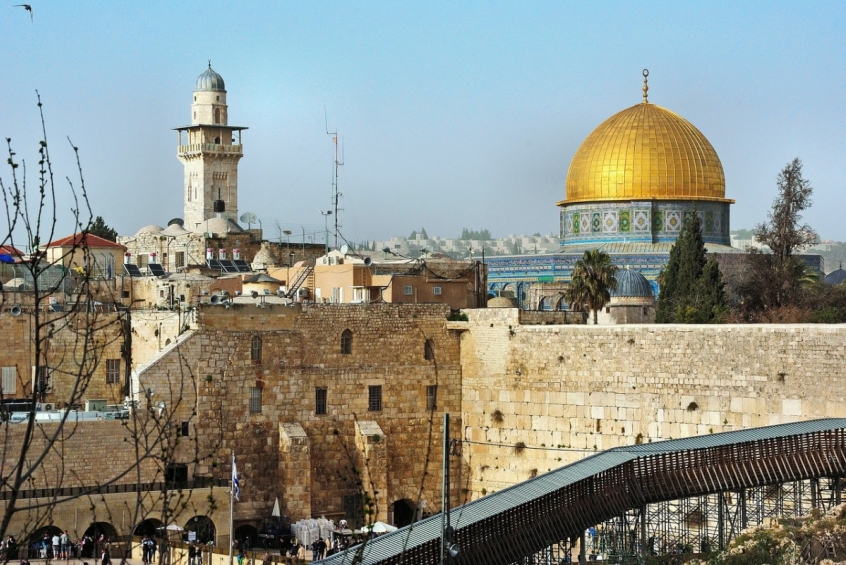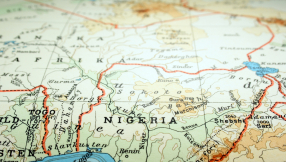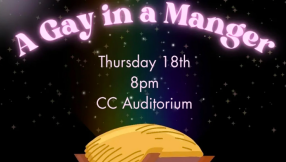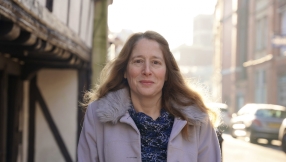What is it about Jerusalem? What is it that makes everyone feel the Holy City, ravaged and fought over for centuries, today belongs to them? What is that hint of magic in the souks and ancient Roman streets that wind through the Old City, that sense of eternal mystery that survives the onslaught of tourists and tat?
Pilgrimage to the Holy Land is not for everyone. Many respectable Christians do not want their image of the holy sites disturbed by the real thing. Some worry about security. Others just hate the politics of what is one of the most political territories on earth, or the largely deplorable legacy of the crusades.

But the great advantage of a visit from a Christian point of view is that it shows the gospels make geographical sense. View the Old City from the standpoint of Jesus when he wept over the city, on the Mount of Olives, and you can see very easily how the Last Supper, the agony on the Garden of Gethsemane, the betrayal and the arrest could all have happened in a night. It's plausible. It works.
And there are other sites, too, where even atheist historians accept Jesus must have been, such as the place of healing at the Pools of Bethesda, where today there lies a stunning ancient church, St Anne's, named after the Virgin Mary's mother and one of the most beautiful spots in the Old City.
You don't have to be an evangelical Christian to acknowledge that something history-changing happened in Jerusalem when Jesus died, sparking the creation of 80 churches inside the Old City alone, and the spreading of the gospel out from Jerusalem and into the four corners of the world, as depicted by the Jerusalem Cross.
In fact, evangelicals less than most Christians appreciate that sense of 'place', stressing that God is omnipresent and not just in churches or holy sites. But even Justin Welby told Christian Today in the Holy Land last year that he had come to appreciate 'a new sense of the importance of place'. Like so many others over the centuries, the archbishop had fallen in love with the Holy Land.
Indeed, there are two types of Jerusalem syndrome: the type that sends you mad and believing that you're a prophet; and the type that makes you fall in love with this very special place and pulls you back there time and time again.
Which is why, perhaps, it is understandable that such a fierce and ongoing political battle rages about the status of this divided city. With Donald Trump's recent recognition of Jerusalem as the capital of Israel, the US administration – encouraged by some dubious and influential Christian Zionist evangelical leaders – appears to have joined many Israelis in the belief that Jerusalem is the 'eternal' and 'undivided' city for Jews. Yet the sacred ground of Jerusalem is everyone's and no one's, and this international city must retain its shared status, as agreed by the international community since 1967, at least until an elusive solution to the world's most intractable political conflict can be found.
It is not always easy to share. Though the Christian, Armenian, Jewish and Muslim quarters rub along together remarkably well in the circumstances, the sometimes fierce division of and at the Church of the Holy Sepulchre, popularly held to be the site of Christ's burial and resurrection, is symbolic of a wider dispute.
And maybe it's because the Christians themselves – Greek Orthodox, Armenian, Catholic and others – are divided, that the Christian presence there is so, well, quiet compared to that of the Jews and the Muslims. This, despite the fact that, in the latter case, the city and the Al-Aqsa mosque – to where Muhammed is believed to have taken his unlikely 'night flight' from Mecca – is only the third most important site for Islam.
True, for Jews who like to say at Pesach 'next year in Jerusalem' the city is of paramount importance too, thanks to the remains of the Western Wall of the Second Temple, and the belief that the Messiah will emerge through the (currently bricked-up) Golden Gate. Dr Irene Lancaster has written powerfully here on the central importance of Jerusalem for Jews all round the world.
But for Christians, Jerusalem is not only where the living Messiah has already been and is, but it will always be key, as shown in Revelation 21: 2 – 'And I John saw the holy city, new Jerusalem, coming down from God out of heaven, prepared as a bride adorned for her husband.'

According to some Christian traditions, Jerusalem is literally as well as symbolically the centre of the world, as depicted in the medieval Mappa Mundi, housed by Hereford Cathedral in England.
There is, then, something bitterly ironical about the dominance of Islamic architecture that appears to have chased and sought to overshadow the great Christian sites around the city (the golden Dome of the Rock of post-card and news media image fame was designed literally to outshine the dome of the Holy Sepulchre), not to mention the attempts by some Israeli settlers to drive Christians out of the Old City.
For Jerusalem is spiritually, literally, symbolically at the heart of the Christian faith. Some might argue that Christians should shout that a little louder from the rooftops of the dense square-kilometre walled city. Others might say that there's enough noise already, and that silence is needed more than another strident voice.
Either way, the eternally tragic nature of Jerusalem is perhaps best captivated in the Talmud, the text on Jewish law written in the 2nd century BC.
'Ten measures of beauty gave God to the world: nine to Jerusalem and one to the remainder,' it says, before adding prophetically: 'Ten measures of sorrow gave God to the world: nine to Jerusalem and one to the remainder.'













